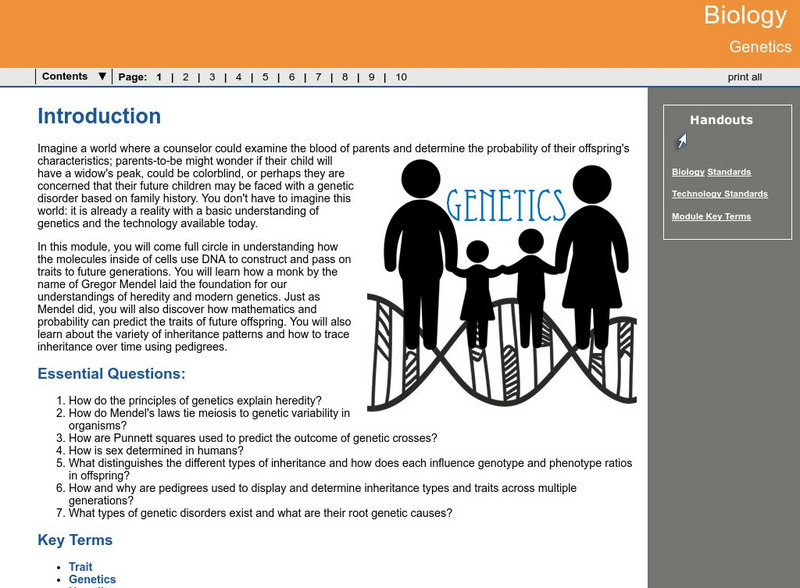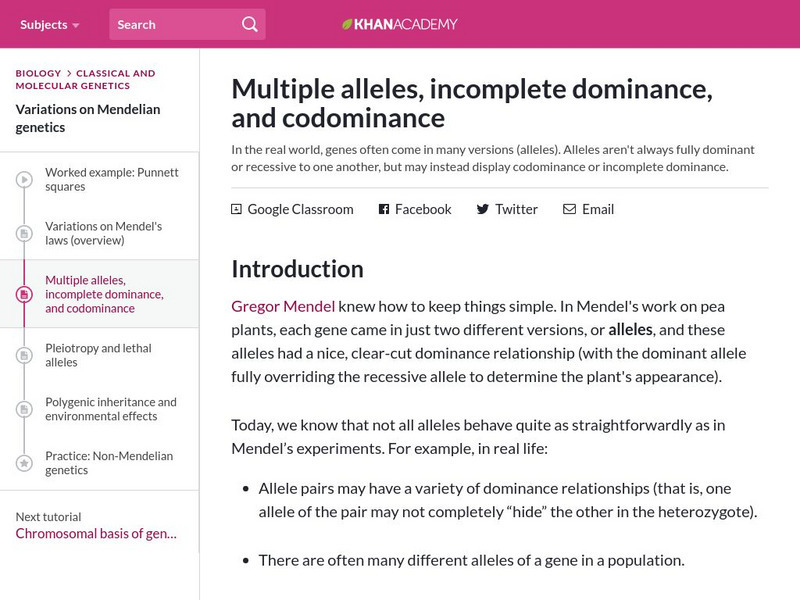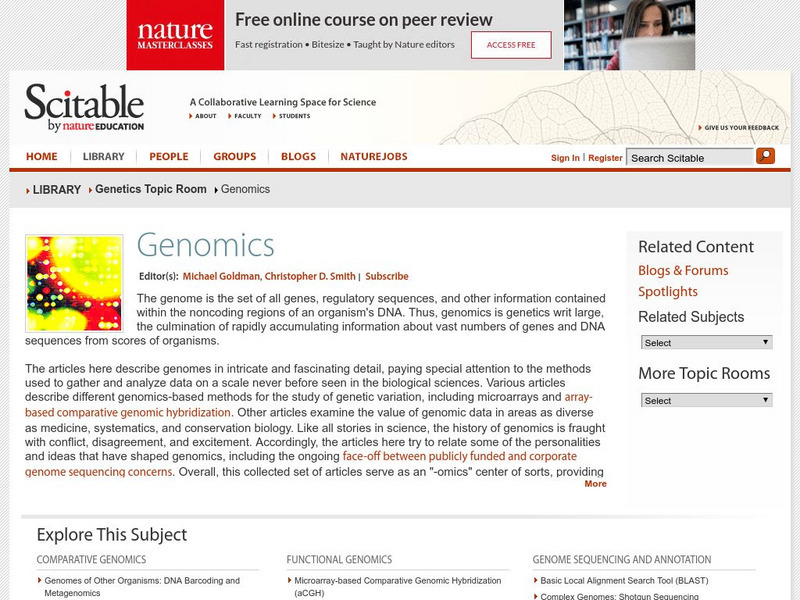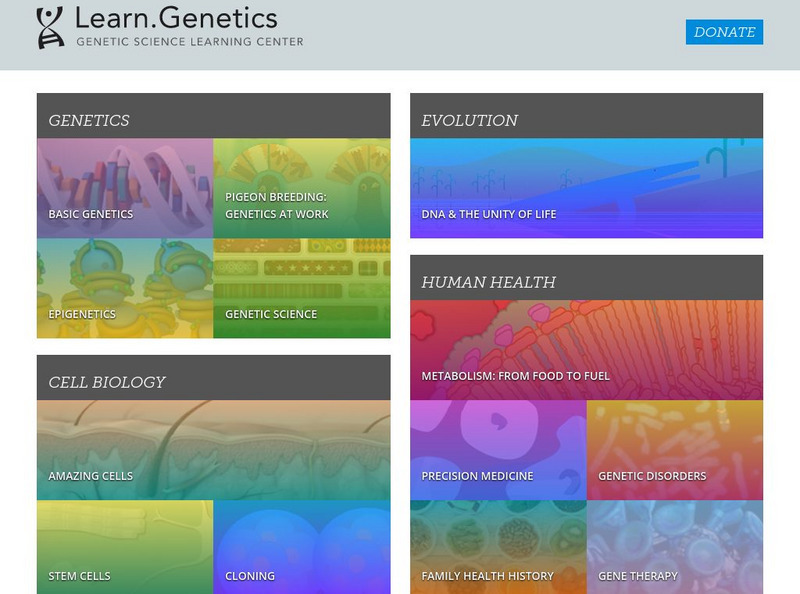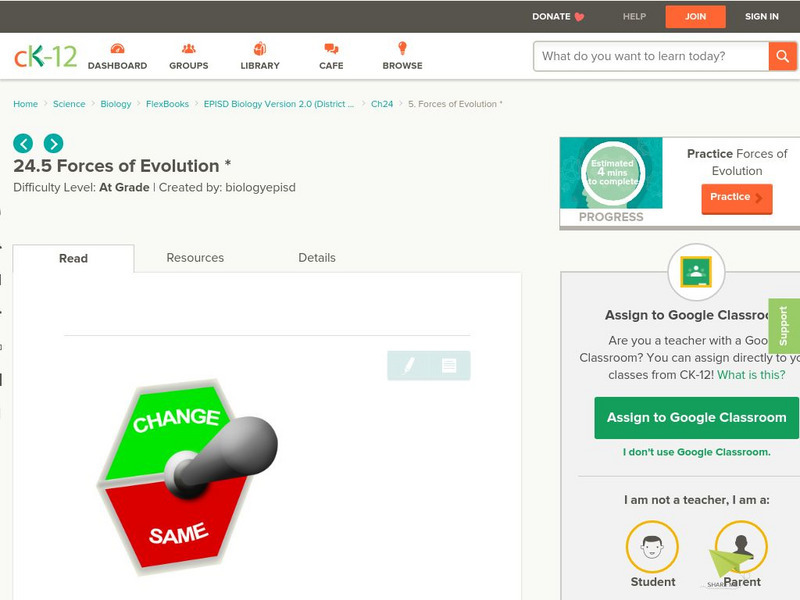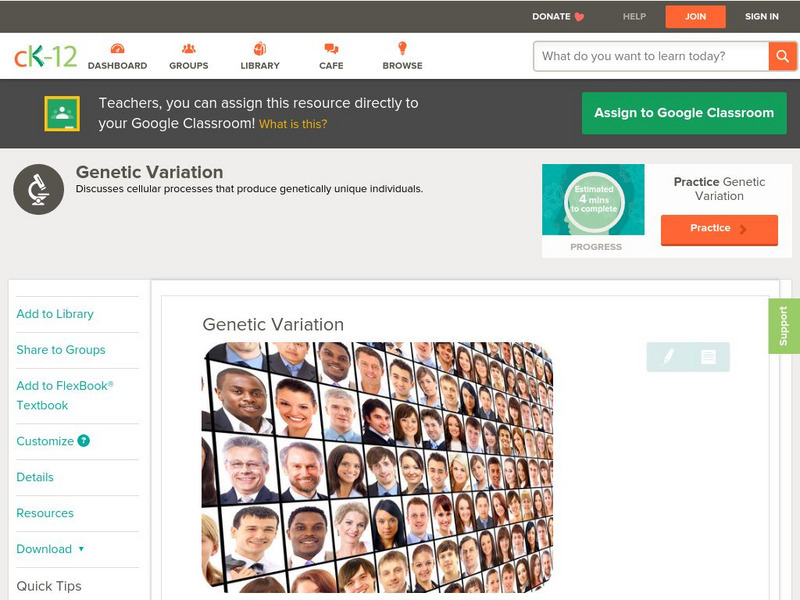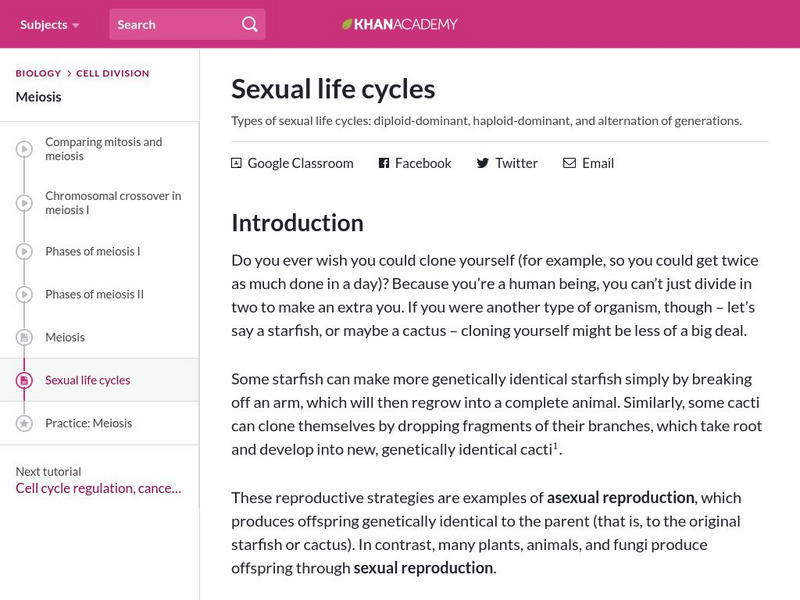CK-12 Foundation
Ck 12: Episd: Genetic Variation
[Free Registration/Login may be required to access all resource tools.] How does genetic variation protect species from extinction? Understand sexual reproduction and the importance of both random fertilization and independent assortment.
Georgia Department of Education
Ga Virtual Learning: Biology: Genetics
Through informational text, interactive activities, practice problems, and video clips, students analyze how biological traits are passed on to successive generations.
Khan Academy
Khan Academy: Multiple Alleles, Incomplete Dominance, and Codominance
In the real world, genes often come in many versions (alleles). Alleles aren't always fully dominant or recessive to one another, but may instead display codominance or incomplete dominance.
Howard Hughes Medical Institute
Hhmi: Biointeractive: Lactase Film With Quiz
Discover why people are lactose intolerant. Understand the genetic traits that allow some people to be lactose tolerant.
eSchool Today
E School Today: Your Cool Tips on Genetics
Explains basic genetics concepts, including genes, DNA, chromosomes, sex chromosomes, how traits are inherited, genetic variation, cloning, and stem cells.
Nature Research
Scitable: Genomics
Get an in-depth look at the genome which includes all genes, regulatory sequences, and other information found in noncoding regions of DNA. Articles on webpage explores the large amount of information available about genes and DNA...
University of Utah
University of Utah: Genetic Science Learning Center: The Basics and Beyond
This website offers a clear definition of the science of Genetics, highlighting DNA and genes. There is a neat, easy-to-understand animated tour of the basics and an opportunity to go inside an animated cell. Student can build a DNA...
University of Utah
University of Utah: Genetic Learning Center: learn.genetics: Rock Pocket Mice
Manipulate the environment to see how it plays a role in the rapid evolutionary changes in rock pocket mice.
University of Utah
University of Utah: Learning Center: learn.genetics: Making Sn Ps Make Sense
Find out how tiny variations in DNA can help scientists predict humans' response to drugs or to disease risk.
University of Washington
Genome Sciences Education Outreach: State Your Traits [Pdf]
Multi-activity instructional activity in which young scholars engage in learning about the inheritance of genetic traits.
PBS
Pbs Learning Media: The Advantage of Sex: Sexual Versus Asexual Reproduction
Why did sex evolve? The likely answers, in this essay written for the PBS series "Evolution" by science journalist Matt Ridley, may surprise you.
PBS
Pbs Learning Media: Genetic Variation
This video segment from NOVA: "Cracking the Code of Life" explores the genetic similarities and differences among organisms.
The Wonder of Science
The Wonder of Science: 3 Ls4 2: Variation, Survival, and Reproduction
Work samples, phenomena, assessment templates, and videos that directly address standard 3-LS4-2: variation, survival, and reproduction
CK-12 Foundation
Ck 12: Episd: Forces of Evolution
[Free Registration/Login may be required to access all resource tools.] Students will explore the factors that lead to evolution such as genetic mutation, gene drift and gene flow.
National Institutes of Health
Niehs: Kids' Pages: You and Your Genes
Online children's story that teaches about genes and how they direct how you react to things in your environment. Click on "next" at the bottom of the story to see how different people respond differently to harmful substances.
Texas Instruments
Texas Instruments: Selection Direction
In this activity you will produce histograms using the Data Graphs Wizard and learn about the concept of biological variance.
Texas Instruments
Texas Instruments: Variety Is the Spice of Life
In this activity, students will collect data on all members of the class. They will make a graph of the data collected, interpret variations, and then draw conclusions.
Estrella Mountain Community College
Online Biology Book: The Modern View of Evolution
Take a closer look into the modern view of evolution. This article includes many pieces of evidence, all which support the theory of evolution.
Palomar Community College District
Palomar College: Recombination and Linkage
Learn about the genetic diversity that is created by recombination on this site. Understand how this recombination is created and how it relates to linkage.
Other
Georgia Perimeter College: Extending Mendelian Genetics
This resource provides a good overview of genetics, including codominance.
McGraw Hill
Glencoe Biology: Gene Linkage and Polyploidy: Self Check Quiz
This self-checking, five question quiz over gene linkage and polyploidy can be used as a review of the concept.
CK-12 Foundation
Ck 12: Biology: Genetic Variation
Discusses how sexual reproduction leads to genetic variation. [Free Registration/Login may be required to access all resource tools.]
Khan Academy
Khan Academy: Meiosis
In this tutorial students will learn how meiosis reduces chromosome number by half and become familiar with crossing over, meiosis I, meiosis II, and genetic variation.
Khan Academy
Khan Academy: Sexual Life Cycles
Tutorial takes a look at the three types of sexual life cycles used by different organisms: diploid-dominant, haploid-dominant, and alternation of generations.



